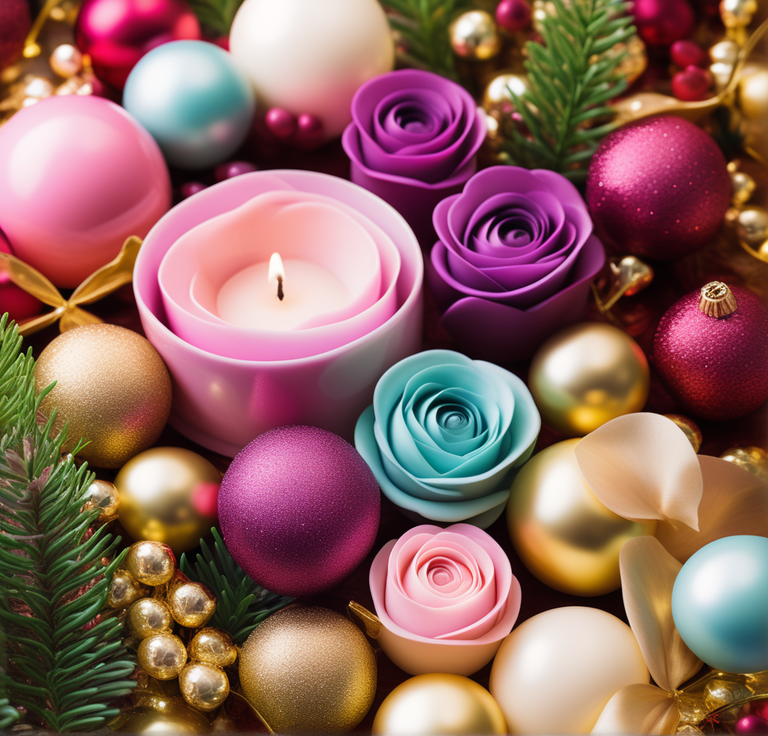The holiday season is a time of joy, festivity, and tradition. One of the most visually striking and enduring traditions associated with Christmas is the use of traditional color schemes. Red, green, and gold have become synonymous with the festive season, evoking a sense of warmth and nostalgia. Surprisingly, many of the colours we use for Christmas are deeply rooted in our Christian beliefs, becoming part of pop culture. In this article, we will delve into the benefits of these traditional color schemes,
The impact of Colours
The use of red and green colours are the most popular at Christmas time. The truth is no one really knows how this became a tradition or the reasons behind the usage of these colours. Colour specialists Lori Sawaya from The land of Colour has offered a simple explanation for the usages of these colours she said that most Christians believe red symbolizes the blood of Christ’s crucifixion. And when it comes to the classic color combination, green represents renewal and eternal life through Jesus, whose birth is celebrated on Dec. 25. Also the colour red has a psychology perspective, red demands visual attention and communicates dynamic, strong, and confident feelings,
The Meaning Behind Red
From a color psychology perspective, red is a color that stimulates excitement, visual attention, and communicates dynamics, energy, and a sense of urgency. These qualities align perfectly with the spirited and lively atmosphere of the holiday season.
The Serenity of Green
On the other hand, green is associated with nature, renewal, and tranquility. Bob Richter, lifestyle expert and author of “A Very Vintage Christmas” and “A Very Vintage Holiday,” says it’s difficult to separate red and green. These colours “really are the quintessential Christmas color combination.” The best example of this is holly and ivy, which remains brilliant and abundant during the winter when other shrubs and trees shed their leaves
The roots of bringing holly and ivy indoors go back to the Celts, who Richter says reportedly used it to ward off evil spirits. It was also the Celts and/or Pagans who began bringing greens to honor the change in seasons and bring life into their homes during the cold winter months.”
The colour green has a calming effect on individuals, providing a visual break from the hustle and bustle of everyday life. During the holiday season, when stress levels can be high, the calming influence of green can contribute to a more relaxed and enjoyable experience.
Gold: The Color of Prosperity and Joy
The gold is perhaps the best Christmas colour as it refers the the story of the Three Wise Men who brought gold, frankincense, and myrrh to the “Christ Child.” According to Richter gold is associated with great financial value, gold is the color of prosperity and abundance,” Adding gold to your home at the holidays is a way of celebrating these gifts and inviting in even more of them.” Perhaps the most opulent holiday color, it shows up frequently in bows, ornaments, candlesticks, and other glittering decor.
Traditional Colors and Cultural Significance
The traditional Christmas color scheme is not a random choice but carries deep cultural significance. The use of red and green during Christmas can be traced back to ancient European winter celebrations. The evergreen tree, adorned with red berries and holly, symbolized life and vitality during the darkest days of winter.
Fast forward to the Victorian era, where the popularization of Christmas traditions solidified the association of red and green with the holiday season. Queen Victoria and Prince Albert’s Christmas tree, displayed in 1848, featured ornaments in red, green, and gold, setting a trend that continues to influence holiday decorations to this day.
Economic Impact of Traditional Colors
The economic impact of Christmas cannot be understated, and the traditional color scheme plays a crucial role in driving consumer spending. According to the National Retail Federation (NRF), According to the National Retail Federation (NRF), holiday spending for November and December 2024 is projected to reach between $979.5 billion and $989 billion.
A significant portion of this spending is attributed to holiday decorations, with red and green ornaments, lights, and other festive items dominating the market. The NRF reports that consumers are more likely to make impulsive purchases when they encounter products that align with their perception of the holiday season. Traditional colors trigger this response, driving sales and boosting the economy.
Social Media and Traditional Color Trends
In the age of social media, trends spread like wildfire, influencing the way we celebrate and decorate for holidays. An analysis of Instagram posts and Pinterest boards reveals a consistent preference for traditional Christmas colors. Red and green decorations receive significantly more engagement than those with alternative color schemes.
This social media trend amplifies the cultural impact of traditional colors, creating a visual unity and shared experience among users worldwide. The popularity of these colors on social platforms further reinforces their status as timeless symbols of the holiday season.
Tradition and Emotional Connection
One of the most compelling benefits of traditional Christmas colors is the emotional connection they evoke. According to a survey conducted by linens Limited, 65% of respondents expressed a preference for traditional red and green decorations over modern or alternative color schemes.
Moreover, the familiarity with traditional colors contributes to a sense of continuity and tradition. The use of red, green, and gold creates a visual language that transcends generations, connecting people across time and cultural backgrounds. This shared visual heritage fosters a sense of belonging and nostalgia, making the holiday season a time of shared memories and experiences.
In conclusion, the benefits of traditional color schemes at Christmas are multifaceted and deeply ingrained in our cultural, psychological, and economic landscape. The psychological impact of red and green, coupled with their historical significance, creates a visually pleasing and emotionally resonant experience. The economic impact is evident in the thriving holiday retail market, driven in part by the popularity of traditional colors.
In the digital age, the influence of social media further amplifies the preference for traditional colors, creating a global visual language of celebration and joy. Ultimately, the enduring appeal of red, green, and gold lies in their ability to connect us to our cultural heritage, evoke positive emotions and foster a sense of unity during the festive season. As we continue to celebrate Christmas, these timeless colors will undoubtedly remain a cherished and integral part of our holiday traditions
Article & Website Disclaimer
The Content within this article is for informational and educational purposes only, it is only the opinion of the creator, you should not construe any such information or other material as legal, tax, investment, financial, health and/or medical advice or other advice. Nothing contained on our Site and/or articles constitutes a solicitation, recommendation, endorsement, or offer by Umarp or any third party service provider to buy or sell any securities or other financial instruments in this or in any other jurisdiction in which such solicitation or offer would be unlawful under the securities laws of such jurisdiction. All Content on this site is information of a general nature and does not address the circumstances of any particular individual or entity. Nothing in the Site or Articles constitutes, without limitation, professional and/or financial advice, and/or medical advice nor does any information on the Site constitute a comprehensive or complete statement of the matters discussed or the law relating thereto. Any expert opinon or statistics in the articles may have inaccurate or outdated information about experts, places, or facts You alone assume the sole responsibility of evaluating the merits of all information, experts, statistical data and its risks associated with the use of any information or other Content on the Site. Before making any decisions based on such information or other Content. You should always consult a professional, advisor in the field , financial adviser and/or medical doctor before making a sound decision






